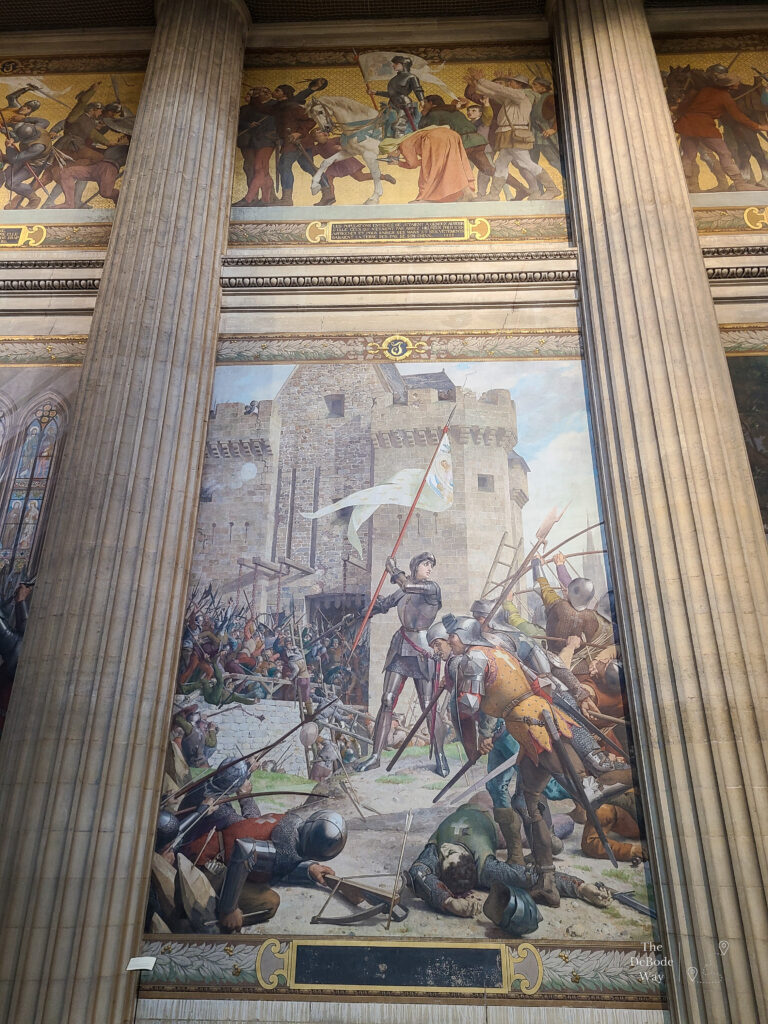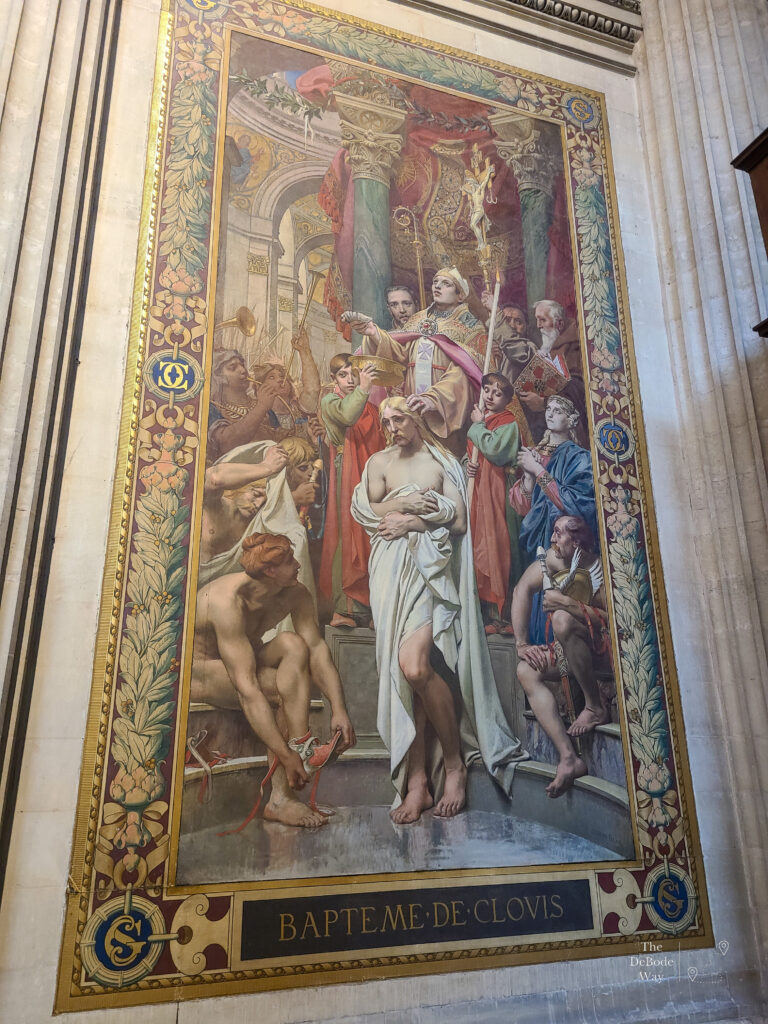If you’ve been following the blog (which you obviously are, otherwise wouldn’t be reading right now. Cool), you’ll know about our most recent adventure to France. That adventure concluded with a few days in Paris. Unlike our usual trip plans, we didn’t end up making a solid plan for Paris because we didn’t know how tired we’d be and had heard rumors that many things would close down in August while the residents left on holiday.
The Conversation
One of our last mornings in Paris we woke up, had breakfast, and had a conversation that went a little something like this:
Tasha: So, whatcha wanna do today?
Jason: Umm, I’m not sure. Any ideas?
T: The Pantheon keeps popping up on the map…any interest?
J: Um, sure, but isn’t Athens a little bit of a jaunt for a day-trip?
T: …
J: …
T: Seriously, what are you talking about?
J: The…Pantheon…the temple of the gods, right? The one in Athens? With all the
other ancient temples?
T: *sigh* Do you mean Rome? That’s in Rome.
J: Sure? I thought it was in Athens.
T: No, not Athens (that’s the Parthenon). It’s in Rome.
J: Oh, okay. So…you…want to go to Rome today?
T: No. The other one.
J: ???
T: …
J: There’s another one? Another Pantheon?
As it turns out, there is another Pantheon in Europe, and it’s in Paris. Who knew? So, after a little Googling to figure out when it opened, ticket prices, entrance times, and the like, we headed out for a short 30-minute stroll to visit the Pantheon, home of the Gods. Only, that’s not exactly what we ended up finding.


The Other One
What we ended up finding – and Tasha knew about in advance (obviously) – was the other Pantheon, which has a pretty cool story. Let’s ‘splain.
The site of the Pantheon has a LONG history in France and has been occupied by a series of monuments throughout the years. It was original burial place of Saint Genevieve who led the resistance to the Huns threatening Paris in 451. In 508, a church was commissioned there by King Clovis as a basilica and tomb for he and his wife Clotilde. Once complete, the King turned over regular care of the basilica to a chapter of the Genovefains, a group – some would call a cult – affiliated with Saint Genevieve, the patron saint of Paris. Her relics were kept there.

Vivre libre ou mourir – Live free or die
Fast-forward about 1200 years and in 1744, King Luis XV (that’s the 15th Louey, if you’re keeping track), who inexplicably recovered from a serious illness after asking for help from St. Genevieve, decided to dedicate a basilica to the Saint. Heck of a thank you, no? He never saw the completion of the basilica in 1790 when the building was formally declared the St. Genevieve Church.
Okay, now hang on, because this gets a little hard to keep track of. A year after its completion (so we’re now up to 1791), the building was converted into a national necropolis during the French Revolution, which was to house the remains of ‘dignitaries of the empire’ (read: only men, at least until much, much later). But, in 1806, Napoleon Bonaparte disagreed with this decision and converted it into a Catholic church, though he opted to keep the dignitary-stuffed-crypt below for its stated purpose.


In 1815, the entire basilica became a church (including the crypt) but was returned back into the Pantheon 15 years later in 1830. In 1851 the Second Republic converted the building back into a church, and it remained as such until the death of Victor Hugo in 1885, at which point the Third Republic again considered the building the Pantheon – a monument to the heroes of France. Thus, it has remained ever since. Good grief.
So, in sum, at times the basilica has been a church, and at times a secular monument. In its current format, the Pantheon is dedicated to the memory of French citizens who have made a notable contribution to humanity. So, if you’re looking to rub elbows (not literally, that would be both gross and highly illegal) with the likes of Voltaire, Rousseau, Victor Hugo, and even Marie Curie (you know, the famous double Nobel Prize-winning FEMALE scientist?), this is the place to go.
Things to See
All that history aside, the Pantheon ended up being a pretty neat place to visit. The main level is constructed in the formation of a cross, as with so many other Church-related buildings. As you walk around the interior, there are murals and paintings of various important parts of French history. And, true to the history of the building itself, some of those histories are more religious in nature (e.g., some tell the life story of Saint Genevieve and Saint Denis, the patron saint of the French people) while others are slightly more secular, depicting famous French battles (and, presumably, victories were such a thing to exist. I kid, for much of its history the French military was a literal force to be reckoned with), the stories of Kings Clovis, Charlemagne, and Louis IX, PLUS the epic of Joan of Arc – which in the end all have a religious component.



After you’ve had your fill of French history, murals, and art displays, you can descend the stairs to the crypt and stand alongside the giants of French history, several of whom we named above. What’s neat is that you don’t really need to understand how each person contributed to history, as there are little iPad-looking things all over the place that show pictures and tell each person’s story. Very helpful. Lots of good information about folks we had and hadn’t heard of before our visit. And of course, no visit would be complete without snapping a few pictures of our favorite philosophers and writers.



Once you’ve had your fill of time with the dead, up you go, to the heavens, so to speak. Go back up the stairs to the main level, and then follow the winding staircase at the side of the building behind the guard to go even further up (if your name is on the list – get the dome view ticket). At the top of the 206 spiral stairs, you exit out onto the walkway around the Dome. The cool thing about climbing the stairs is the 360-degree, panoramic view of the entirety of Paris you get from here. Keep in mind, it’s not the tallest building in Paris (at least not anymore, though it was for a time), but the views are still pretty impressive. Not sure what you’re looking at? No worries, there are signs at each viewing outcrop that outline the cityscape in view and help you to identify the main buildings. Cool.



Our Conclusion
So, if you’re looking for a fairly low-key place to go the next time you’re in France, we can’t recommend this place enough. It wasn’t super busy (we walked right in with tickets in hand), but it has an impressive amount of information and all things French packed into a relatively small building. To clarify: the building is decently huge, but most French architecture is absolutely ginormous. So, in a comparative sense, this wasn’t that. But that’s okay because it lets you see what you want without spending all day doing it.
Admittedly, I’m not a history fan – it’s in the past, let it go! That said, this was a different way to display history so it was more of a narrative, not history lesson after history lesson, if that makes sense. At least for me, that made it more interesting. The Crypt has a semi-creepy vibe, but it is still interesting and definitely worth the stroll through its pristine stone caverns. And of course, if nothing else, go upstairs to the Dome and get those spectacular views.
And all thanks to the Pantheon. Just…make sure you’re in the right one.




